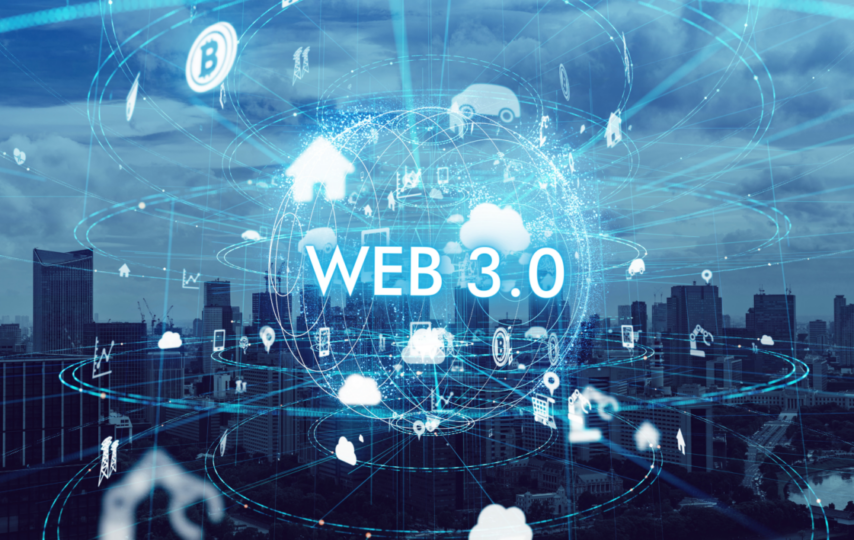The advancement of the internet has seen surprising shifts. The technological headways are reshaping the manner in which we collaborate with online spaces and offers a brief look into a future where computerized encounters are more vivid and dynamic. The static pages of Web 1.0 have advanced into more interactive and social stages (Web 2.0) and presently we stand near the edge of one more extraordinary period, Web 3.0 and the rise of the Metaverse. Web 3.0 is known as the Semantic web or the Decentralized Web. It is the next stage in the advancement of the Internet. It addresses a dream of the web that is more clever, interconnected and decentralized contrasted with its ancestors, Web 1.0 and Web 2.0. The arising idea of the Metaverse goes beyond the traditional 2D web encounters which offers a three-layered (3D) and multi-tangible climate. It is not a single platform but a vast network of interconnected virtual spaceswhere clients can participate in different exercises, like socializing, working, gaming, going to events and that’s only the tip of the iceberg. The fate of online spaces is driven by technological progressions which is changing user’s ways of behaving and developing cultural requirements. Several key trends are molding the scene of online spaces, impacting how we interface, work and participate in digital conditions.
What is web 3.0?
Web 3.0 is described by a more intelligent and decentralized online experience. It addresses the next developmental period of the Internet.In contrast to Web 2.0, which focused on user-generated content and social collaboration, Web 3.0 introduces a methodology that is more semantic and machine-friendly. In Web 3.0, information isn’t just created by users but in addition deciphered by machines which helps in enabling more brilliant and context aware applications. Decentralization is a critical element of Web 3.0, worked by blockchain technology. It ensures transparency, security and removes the need for intermediaries. Web 3.0 works with decreased dependence on centralized entities with smart contracts, self-executing agreements on the blockchain, automate processes and transactions. Artificial intelligence and machine learning play vital roles in understanding the user preferences and delivering the content according to it. By utilizing decentralized technologies, Web 3.0 aims to shift control from centralized entities to users and focus on emphasizing the privacy, security and user independence. To Verify your internet connection speed, go to at ptcl speed test and compare with your package.
Here are key characteristics and concepts associated with Web 3.0:
- Decentralization &Blockchain Technology
Web 3.0 utilizes blockchain and other decentralized technologies to get away from the centralized model of Web 2.0. This enables greater security, transparency and control over information for users.
- Semantic Understanding
Web 3.0 use AI and machine learning which aims to enhance the web’s ability to understand and interpret information. Machine learning and artificial intelligence play a critical role in enabling systems to get a grasp of context, semantics and user intent.
- Interoperability
Web 3.0 focuses on data interconnectedness and interoperability. It allow different systems and platforms to seamlessly share and exchange data. This interconnectednessadds to a more cohesive and integrated web experience.
- Personalization
Web 3.0 is designed to offer more customized and context-aware experiences for users. The web can tailor content and services based on individual preferences and behavior through cutting edge calculations and AI.
- User Control and Ownership
Web 3.0 emphasis on giving users a greater control over their data and digital identity. Decentralized technologies such as blockchain enable users to safely claim and manage their data.
- Tokenization and Cryptocurrencies
The use of tokens and cryptocurrencies enable users to have digital assets. The integration of tokens and cryptocurrencies into Web 3.0 paves the way for new economic models, decentralized applications (dApps) and the tokenization of various digital assets.
The Emergence of Metaverse
The Metaverse is a complex and evolving concept. It started as science fiction idea that have evolved into tangible and dynamic information gateways. There are several technologies, platforms, and protocolsthat are involved in the workings of metaverse.The expression “Metaverse” is a collective virtual shared space that combinesthe aspects of the physical and digital worlds. It integrates elements of augmented reality, virtual reality and 3D technology to generate immersive digital environments. In the metaverse, the lines between the physical and virtual worlds are blurred, not only between social interactions but also between commerce, education and entertainment sectors.
The following are multiple ways by which the Metaverse is influencing and reshaping the world:
- Global Connectivity
The Metaverse works with global connections which allowindividuals from different parts of the world to interact and collaborate seamlessly.Check your internet connection’s speed at speed test ptcl.
- Immersive Socializing
Users can take part in social activities in a more immersive way such as attending virtual events, concerts and gatherings inside the Metaverse.
- Virtual Economy
In the Metaverse, users can sell, buy and trade their digital assets through virtual economy setup. This includes virtual real estate, virtual goods and non-fungible tokens (NFTs).
- Monetization for Creators
Content creators, artists and performers can monetize their work directly through the sale of digital assets which provides new avenues for income.
- Remote Work& Virtual Workplaces
The Metaverse provides immersive virtual environments for meetings, collaboration and teamwork.Companies can establish virtual offices. Employees can work together in a shared digital space to foster a sense of presence and collaboration.
- Immersive Learning
The Metaverse can enhance education through immersive and interactive learning experiences. It allow students to explore historical events, conduct virtual experiments and engage in collaborative projects.
- Training Simulations
Industries can leverage the Metaverse for realistic training simulations, particularly in fields like healthcare, aviation and emergency response.
- Immersive Gaming
The gaming industry is a major driver of the Metaverse. It offers players a deeply engaging and realistic virtual environment. Gaming in metaverse leverages advanced technologies such as virtual reality (VR), augmented reality (AR), high-fidelity graphics and spatial audio to create a sensory-rich and interactive world.
- Live Events
Virtual concerts, sports events and entertainment experiences are becoming more prevalent within the Metaverse.
- Virtual Medical Care
The Metaverse can support virtual healthcare services. It is enabling remote consultations, therapy sessions and medical training simulations.
- Challenges and Considerations
- Ethical Considerations: The Metaverse raises ethical questions related to privacy, digital identity, and the potential for monopolistic control by large corporations.
- Digital Inclusion: Ensuring access to the benefits of the Metaverse for all populations, regardless of socio-economic status, is a critical consideration.
Conclusion
As we transition from Web 3.0 to the metaverse, we are witnessing a profound transformation in how we perceive and engage with online spaces. The journey from Web 3.0 to the metaverse represents not just a technological evolution but a reimagining of the internet’s role in our lives. The future of online spaces is being shaped by decentralized principles, immersive experiences and the creation of a digital frontier where users can explore, create and connect in ways previously unimaginable. As we navigate through this technological landscape, it is essential to strike a balance between innovation and ethical considerations. It is not just a technological progression but a cultural and societal shift that holds the potential to redefine the way we experience the digital realm. The future is virtual, and it’s happening now








